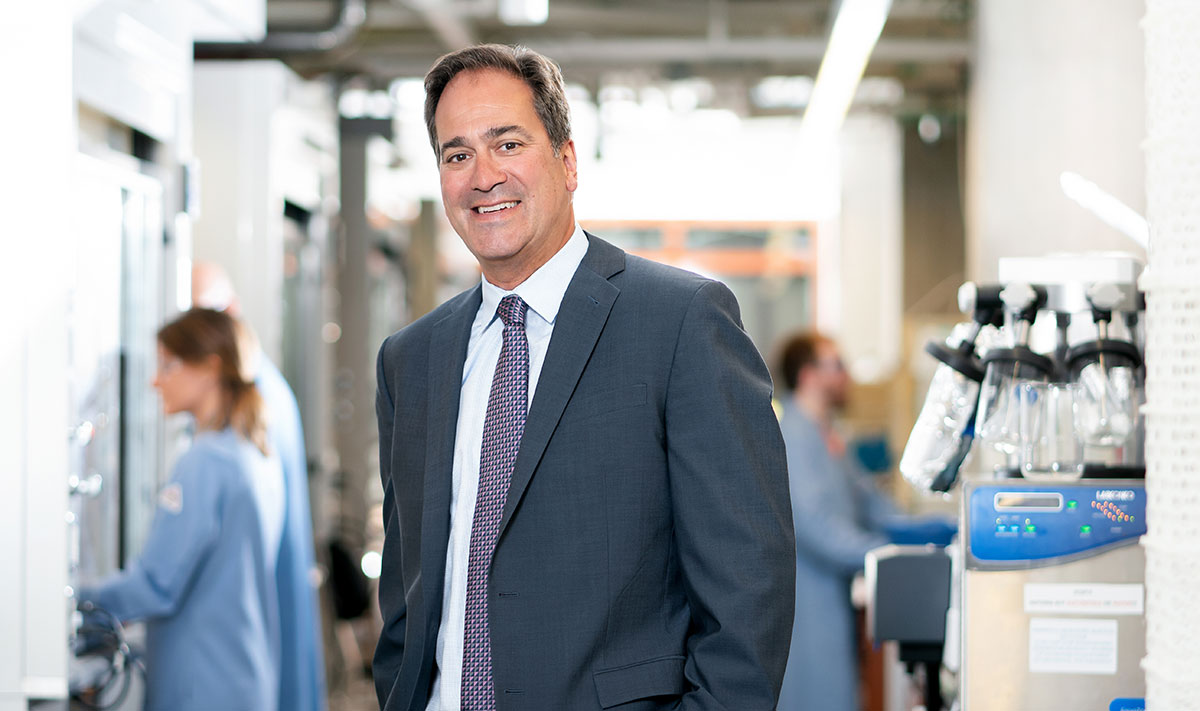Research
Researchers address the COVID-19 outbreak
March 30, 2020

During this challenging time, I’d like to share a few examples of how researchers at the IIN are joining colleagues across Northwestern in working to address the novel coronavirus (COVID-19).
Advanced technologies developed at the IIN are being utilized or repurposed in creative ways, leading to efforts that are diverse in their approaches and encouraging in their potential.
3D printing face shields for hospitals
There is currently a shortage of personal protective equipment (PPE) in hospitals. James Hedrick, David Walker from Azul 3D, and I saw an opportunity to put a meaningful dent in that need by 3D printing face shields to protect health care workers as they treat patients.
HARP (high-area rapid printing) uses projected ultraviolet light to cure liquid resins into hardened plastic. This process can print pieces that are hard, elastic, and mechanically robust, and they can be created at a record throughput for the field of 3D printing.
I was interviewed by WGN News about our team’s effort. To meet our goal of 1,000 components per day, we will be running the HARP printer 24/7. Volunteer team members are working in six-hour shifts to keep the production cycle continuously ongoing.
Within a few weeks, new printers are expected to raise the output to 2,000 face shields per day. These printers are 40x faster than the best commercial printers in the market place.
Developing self-sanitizing face masks
Responding to a call for immediate proposals to address COVID-19, Prof. Jiaxing Huang received funding from the National Science Foundation to develop a new self-sanitizing medical face mask that deactivates viruses on contact.
Current masks provide a physical barrier, reducing the number of escaped respiratory droplets that could become a new source of infection after entering the atmosphere or landing on objects and surfaces. Prof. Huang and his team are investigating anti-viral chemicals that can be safely built into masks to self-sanitize these droplets, helping reduce the level of viruses exhaled by infected wearers and better protect healthcare workers and others around them.
Innovations in cell-free biosensing
Another example are innovations in field-deployable, cell-free biosensing that are being developed by Profs. Michael Jewett and Julius Lucks. Developed with support from the IIN’s Air Force Center for Excellence for Advanced Bioprogrammable Nanomaterials (C-ABN), these nanotechnologies were originally devised to detect a range of contaminants, from contaminants in water (e.g., fluoride) to human performance markers.
The team is now redirecting their technology to develop a freeze-dried, cell-free diagnostic for COVID-19 that would be widely distributed, inexpensive, and easy-to-use.
Identifying and optimizing antiviral medicines
Prof. Jewett is also working to identify and optimize antiviral medicines capable of neutralizing COVID-19. This research is based on his pioneering cell-free protein synthesis platform developed at Northwestern – in vitro systems that contain the molecular machinery needed to implement biological function within living intact cells.
These systems allow for fast manufacturing, rather than the typical 9+ month timelines, to meet the needs of the current outbreak.
Understanding mechanisms of viral infection
Profs. Franz Geiger and Nathan Gianneschi at Northwestern and Prof. Qiang Cui at Boston University are collaborating on a research project which aims to understand the membrane fusion that occurs between virus and host during early infection.
Such knowledge would provide valuable insight into the working mechanisms of viral infection and significantly improve the design of new antiviral drugs.
These are a few examples of how the IIN is fulfilling its mission to catalyze and support world-class interdisciplinary nanoscience research to address the world’s most pressing problems.
Thank you for being part of what we do.